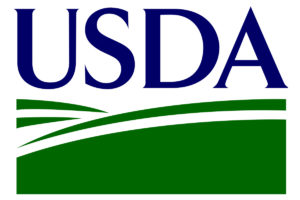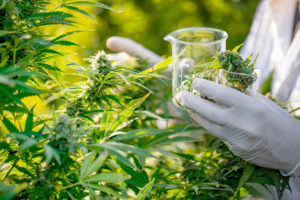
Since hemp was re-legalized in 2018, the law has limited the plant’s THC levels at 0.3 percent. That limit has persisted through the interim final rule (October 3, 2019) and the final rule (released January 15, 2021 and in effect since March 22, 2021). This ceiling set the stage for the annual dance we know and love: keeping our crops from getting “hot” as harvest approaches. It’s a high-wire act that has growers trying to maximize CBD while keeping THC at or below legal limits.

We’ve all known that the 0.3 percent is hard to work. It’s arbitrary and has no scientific foundation. By contrast, medical and recreational cannabis contains a whopping 15 to over 30 percent THC. Hemp levels of THC are a small fraction of what is considered psychoactively impactful. Even more ironic is the fact that only hemp flowers contain any THC, while the rest of the usable fiber (leaves, stems, etc.) contains none.
Maybe you’ve read about the notion some have about increasing the 0.3 limit to one percent. But, even as some push for raising the US limit to one percent, it must be considered that Canada and the European Union both have a 0.3 percent limit. Clearly, we need to analyze how any changes we make can affect our hemp trade outside our borders.
Some experts fear that a one percent limit would lead to overproduction of extract plants. We think it’s hard to predict how this would play out. The fledging extract and hemp fiber production industries have both been outpaced by the agricultural side of the business; we expect this is a self-correcting, supply/demand market problem that will eventually work itself out.

While the USDA can’t change the 0.3 percent limit (only a change in the law can fix it) it’s possible that changing the testing method might be a faster, easier political solution. Testing only for the delta-9 THC (instead of total THC) would help a lot. A total THC testing requirement is in the USDA final rule, but the 2018 Farm Bill only defines hemp by delta-9 THC. Deconflicting these definitions in favor of delta-9 testing only would give growers some much-needed breathing room.
For now, there is still some good news for us in the final rule. The new 30-day sample collection window and the new performance-based sampling create more flexibility for growers and states. The feds have also raised the threshold of “negligent violation” to one percent, though we still must remediate or dispose of any plants exceeding the 0.3 percent maximum.
The have also allowed for alternative disposal methods for noncompliant plants, removing the requirement for DEA or law enforcement supervision, allowing for retesting of noncompliant crops, and removing flowers only for disposal.
We expect to see positive changes in the future around regulations regarding hemp and cannabis agriculture, production, and consumer use. Until then, the final rule is at least taking us a small step in a better direction.


Recent Comments